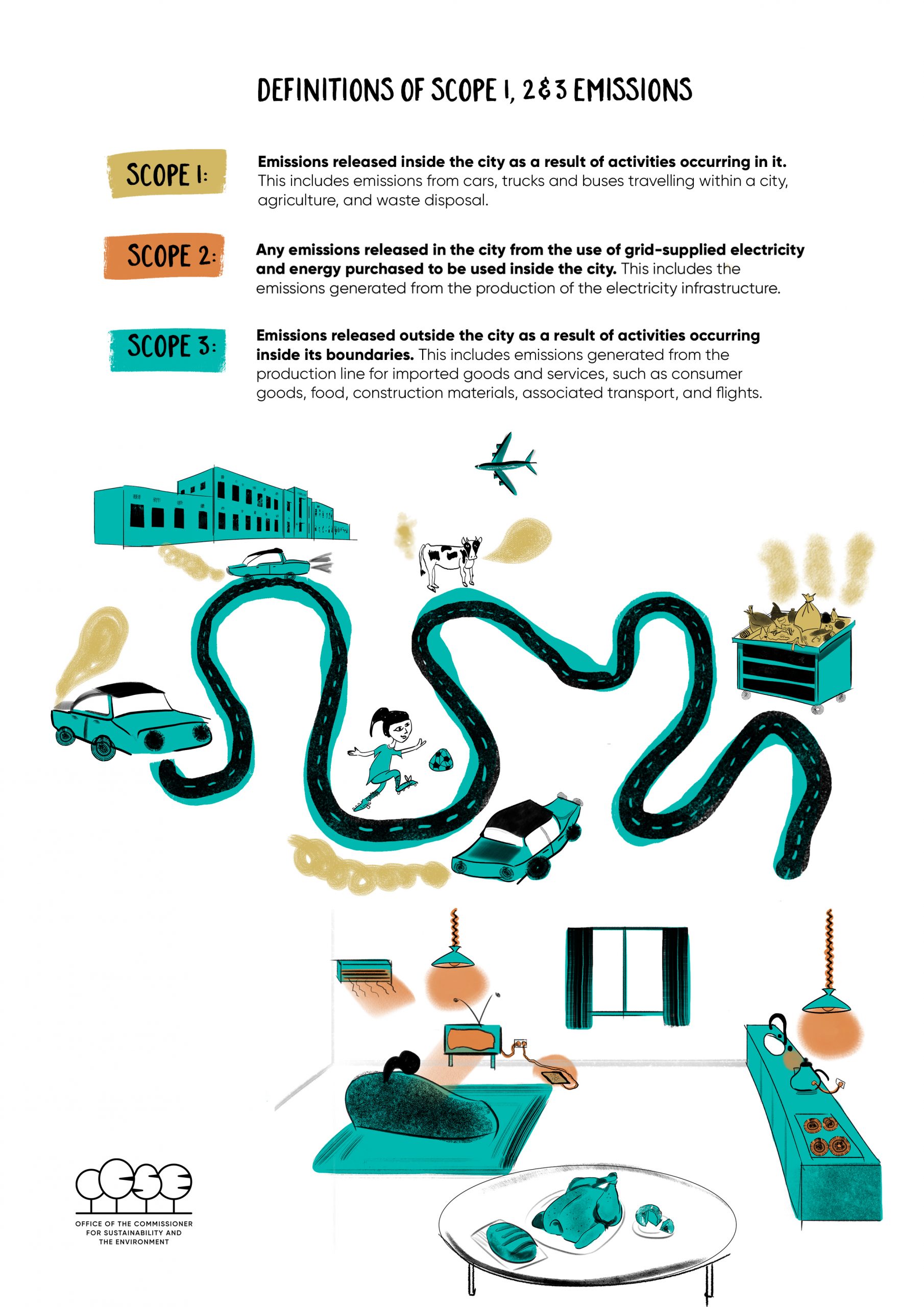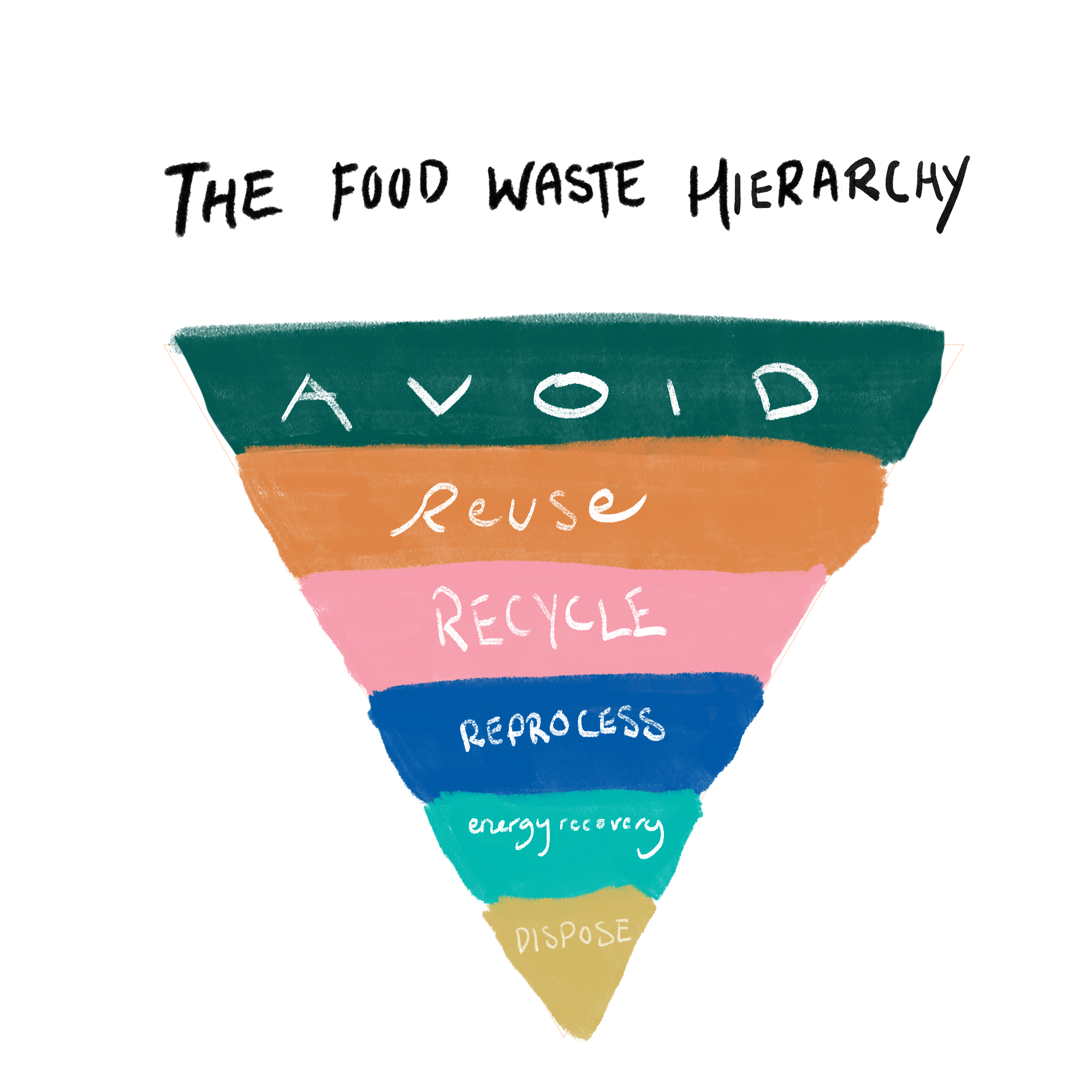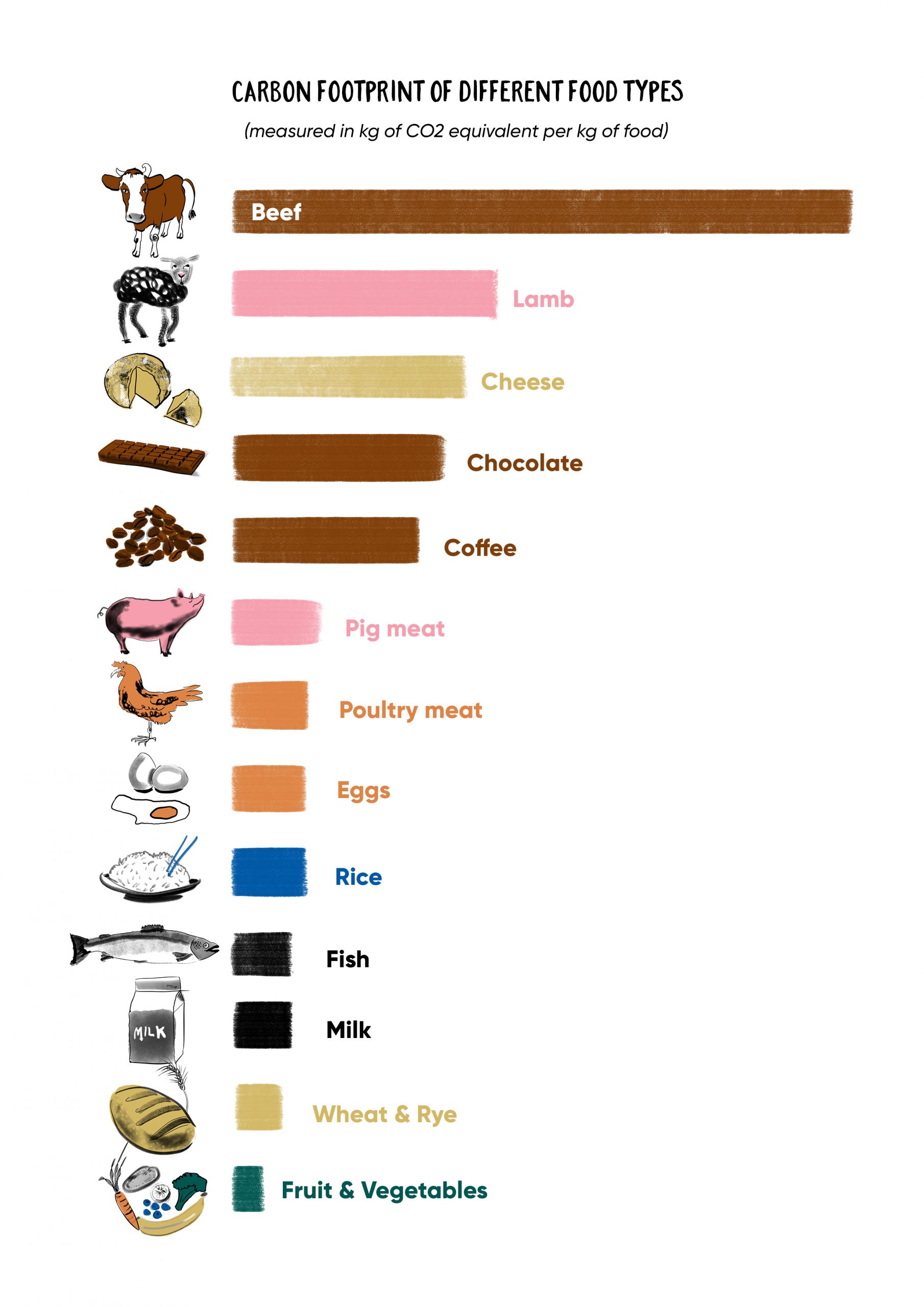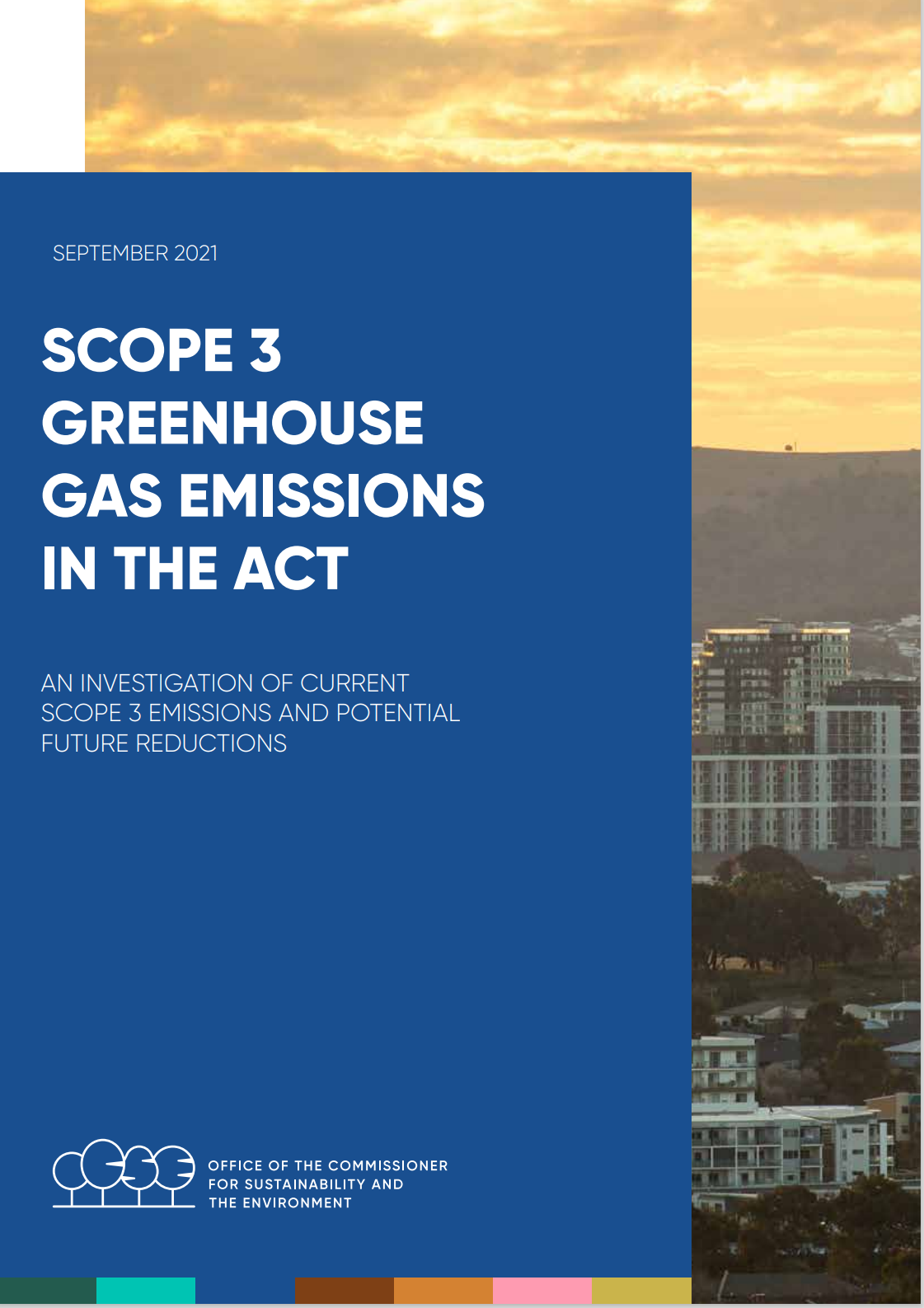
What are scope 3 emissions? And why do consumer products have embodied carbon?
Let’s start with the second question, which will help us answer the first one.
For every item that is brought into the ACT, greenhouse gas emissions are produced. This is because of the extensive number of steps in production chains.
As an example, this infographic follows the hypothetical production journey of a t-shirt bought online by a Canberran. Here you can see that the associated greenhouse gas emissions are all ‘scope 3 emissions’, apart from the small proportion involved once the t-shirt enters the ACT.
Even if most of the production steps occurred in a single country, every step would occur in a different location, requiring emission-producing transportation and warehouse storage between destinations. Every time a machine is involved energy is required, and this energy is typically produced from fossil fuels.

But what are scope 3 emissions? Let’s break it down.
When we talk about emissions, we mean the amount of greenhouse gases (GHGs) released in association with an activity. UNFCCC defines greenhouse gases as:
The atmospheric gases responsible for causing global warming and climate change. The major GHGs are carbon dioxide (CO2), methane (CH4) and nitrous oxide (N20). Less prevalent –but very powerful — greenhouse gases are hydrofluorocarbons (HFCs), perfluorocarbons (PFCs) and sulphur hexafluoride (SF6).
The different scopes classify where these emissions are coming from.
Scope 1: Emissions released inside the city as a result of activities occurring in it.
Scope 2: Any emissions released in the city from the use of grid-supplied electricity and energy purchased to be used inside the city.
Scope 3: Emissions released outside the city as a result of activities occurring inside its boundaries.
This infographic gives examples of the activities and products associated with each scope.

Why is the ACT looking at scope 3 at all?
In May 2019 the ACT government declared a climate emergency, recognising the importance of government leadership and the urgency of action required to limit the severe effects of climate change.
The ACT Government is a global leader on climate action, committed to ambitious emissions reductions targets, such as net zero emissions by 2045, as well as being the first jurisdiction in Australia to reach 100% renewable energy in 2020. This means we’ve reduced scope 2 emissions to zero.
Since this turning point in 2020, emissions reduction strategies have focused on scope 1 emissions, but as our Investigation shows, scope 3 emissions are equal to almost 94%. We now need to address scope 3, as well as scope 1.
The ACT Government now has the opportunity to continue its leadership on climate action by setting new ambitions, and starting to measure and reduce its scope 3 emissions.
What can I do myself to reduce my scope 3 emissions?
Households contribute around 60% to the total scope 3 emissions for the ACT. There are many ways in which you as an individual can take action to reduce your scope 3 emissions, and you may already be doing some of them!

-
Buy less
-
Consider the composition and origin of each product you buy
-
Buy second hand
-
Borrow
-
Repair products if possible, and use them for as long as possible
-
Reduce waste
- Reduce flights where possible, especially internationally

While individuals are not solely responsible for emissions reductions, our actions are powerful and we can all make a positive impact with small changes.
Some of the big areas we identified, where people, businesses and government can make change currently, include food and building.

In the ACT, food organics comprises 37% of waste that goes to landfill.
Moving food waste to a composting system significantly reduces the contents of our bins, and lowers greenhouse gas emissions.

Did you know that throwing away one burger wastes the same amount of water as a 90-minute shower? [1]
This upside-down triangle represents the way we should aim to approach waste, by starting at the top with avoidance wherever possible.
[1] Bakker, J and Mason Nunn, R., 2021. Zero waste society: a not so radical way of tackling climate change, The Fifth Estate.
The food types we choose when shopping for dinner or eating out can have a significant impact on our carbon footprint.


Reduce your carbon footprint while building or renovating.
This infographic gives advice on steps you can take to reduce the amount of scope 3 emissions produced.
The Report
What does it cover and where can I find out more?

The Scope 3 Greenhouse Gas Emissions in the ACT Investigation Report outlines the first time that scope 3 greenhouse gas emissions for the ACT have been calculated.
UNSW calculated scope 3 emissions for the whole of the ACT and outlined a methodology for future use (see UNSW report).
The Footprint Company calculated scope 3 emissions of the ACT Government (see The Footprint Company report).

What does the report suggest the ACT Government should do?
- Focus on new ways to measure scope 3 emissions and publish this information every 3 years
- Talk to other states and territories to ensure progress is taking place across Australia
- Make sure the ACT Government is publishing all the data needed to measure scope 3 emissions
- Set a goal for reducing scope 3 emissions that come from the ACT Government doing its job
- Make sure that when the ACT Government buys goods or services, low scope 3 emissions are an important factor in deciding which businesses to use
- Make sure that ACT Government office spaces aren’t bigger than the size needed for the staff occupying them
- Support flexible work arrangements for ACT Government staff so they aren’t travelling unnecessarily
- Educate Canberrans about reducing scope 3 emissions, including that food waste should be avoided, and then composted; some building materials have lower embodied emissions than others; and that all our products should be kept for as long as they can.
- Set a goal for reducing how much of our city’s food goes into landfill and instead get it composted.
- Do further research into how we can increase the amount of low carbon cement available in the ACT
- Set a goal for reducing scope 3 emissions that result from building public infrastructure
- Review the laws around construction and building to make sure that scope 3 emissions are considered an important factor when building in Canberra.
The full recommendations are available within the report, with the above points providing a simplified summary.
Next steps
The Scope 3 Greenhouse Gas Emissions in the ACT Investigation Report was presented to the Legislative Assembly on 11 November 2021.
The ACT Government Response was tabled on 2 June 2022.

